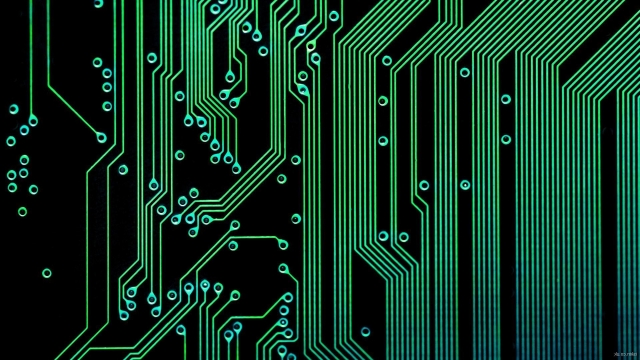
The technological advancements that have taken place in recent years have brought about an era of incredible possibilities. One such groundbreaking development that has captured the attention and curiosity of both experts and the general public alike is deepfake technology. This revolutionary innovation allows us to create remarkably realistic counterfeit audio and video content that can be indistinguishable from the real thing.
Deepfake technology utilizes artificial intelligence and machine learning techniques to analyze and manipulate existing visual and audio data to seamlessly superimpose someone’s face onto another individual in a video or change their voice in an audio recording. This technology has gained prominence due to its potential applications in various fields such as entertainment, politics, and even criminal activities. While deepfake technology offers numerous exciting opportunities, it also raises significant concerns regarding its ethical implications and the potential consequences it may bring.
With the rise of deepfake technology, we find ourselves at a crossroads where the notion of truth and reality becomes increasingly blurred. The ability to create highly convincing fake content raises alarming questions about the authenticity of the information we encounter in our daily lives. As we delve deeper into the wonders and capabilities of deepfakes, it becomes crucial to explore and understand the potential impact it may have on society, as well as the measures that need to be in place to mitigate the risks associated with its misuse.
In the following article, we will embark on a journey to unveil the future of this mesmerizing technology and delve into its intricacies. We will delve into the workings of deepfake technology, its current applications, and the potential implications it holds for our society. Through an in-depth exploration of both the positive and negative aspects, we hope to gain a comprehensive understanding of this remarkable innovation and its role in shaping our collective future. So, let us begin this captivating exploration into the world of deepfake technology.
The Rise of Deepfake Technology
With the rapid advancement of technology, a new and controversial phenomenon has emerged, known as deepfake technology. Deepfake technology refers to the sophisticated technique of using artificial intelligence to manipulate, alter, and synthesize visual and audio content with astonishing accuracy. This groundbreaking technology has garnered both awe and concern from various sectors, as its potential applications range from entertainment and art to misinformation and malicious activities.
One of the main reasons behind the rise of deepfake technology is the exponential growth of machine learning algorithms and computational power. These advancements have enabled researchers and developers to create highly realistic and believable deepfake videos that can seamlessly blend individuals’ faces onto different bodies or modify their expressions. By harnessing the power of deep neural networks, these algorithms can learn and replicate the unique features and nuances of a person’s appearance, voice, and mannerisms.
Furthermore, the accessibility of high-quality video footage and audio recordings from various sources, such as social media, has contributed to the proliferation of deepfake technology. With an abundance of publicly available visual and audio content, developers can train their deep learning models on vast amounts of data, enabling them to generate even more convincing deepfake media.
However, along with its potential benefits, deepfake technology poses significant ethical concerns. The ease with which anyone can create and distribute deepfake content raises serious questions about privacy, consent, and the spread of disinformation. In an era where trust in media is already fragile, the proliferation of deepfake videos threatens to erode public trust even further, as distinguishing between real and fake becomes increasingly challenging.
In conclusion, the rise of deepfake technology has revolutionized the way we perceive and interact with visual and audio content. As its capabilities continue to advance, it is crucial to address the ethical implications and develop strategies that mitigate the potential risks associated with its misuse. Only by understanding and staying vigilant about the impacts of deepfake technology can we navigate this complex realm and harness its potential for the greater good.
Ethical Concerns and Implications
https://faceswap.akool.com/
Deepfake technology, with its groundbreaking advancements, poses significant ethical concerns and implications that cannot be overlooked. As society delves deeper into the realm of manipulated media, it becomes imperative to address the potential repercussions.
First and foremost, one of the primary ethical concerns surrounding deepfake technology revolves around consent and privacy. With the ability to convincingly manipulate videos and images, individuals can be portrayed in compromising or incriminating situations without their knowledge or consent. This not only raises questions about personal privacy but also contributes to the erosion of trust in digital media.
Additionally, the rise of deepfakes has amplified the spread of misinformation and fake news. As the technology becomes more sophisticated, distinguishing between genuine content and manipulated content becomes increasingly challenging. This poses a significant threat to the integrity of public discourse and can have severe consequences on democracy, social harmony, and public trust in institutions.
Moreover, the potential for deepfake technology to be misused in malicious activities cannot be ignored. Extremist groups, criminal organizations, and even state actors could exploit this technology to spread propaganda, frame innocent individuals, or tarnish reputations. The consequences of such misuse could result in irreversible damage to both individuals and society as a whole.
It is essential, therefore, to address these ethical concerns and implications surrounding deepfake technology. Regulating its use, raising awareness, and investing in advanced detection and verification mechanisms are crucial steps to minimize the potential risks associated with this technology. By doing so, we can navigate the future of deepfakes responsibly and protect the core values of truth, privacy, and trust that underpin our society.
Potential Applications and Benefits
Deepfake technology, with its remarkable capabilities, has the potential to revolutionize various industries and bring about significant benefits. From entertainment to healthcare and beyond, here are some of the exciting applications that deepfake technology can offer:
Entertainment Industry: Deepfake technology opens up new possibilities for the entertainment industry. With its ability to seamlessly replace the faces of actors, it can bring deceased actors back to the screen or create compelling fictional characters. This technology also allows for more immersive experiences in virtual reality and augmented reality applications, making entertainment even more engaging.
Advertising and Marketing: Deepfakes can play a crucial role in advertising and marketing campaigns. By creating hyper-realistic videos or images, marketers can generate highly personalized and engaging content tailored to specific demographics. Deepfake technology enables brands to enhance their storytelling capabilities and create captivating advertisements that resonate with their target audience.
Research and Education: Deepfake technology can have significant implications for research and education. In the field of historical reconstruction, for example, deepfakes could be utilized to bring ancient sculptures or portraits to life, allowing researchers and students to gain a deeper understanding of historical figures or cultures. Moreover, deepfake technology can be utilized in training simulations, enabling professionals to practice real-life scenarios in a safe and controlled environment.
In conclusion, deepfake technology holds tremendous potential for a wide range of applications. Its ability to manipulate and synthesize visual content can lead to groundbreaking developments and benefits in the entertainment industry, advertising and marketing campaigns, as well as research and education. As we continue to explore the wonders of this technology, it is crucial to carefully consider ethical implications and ensure responsible use to maximize its positive impact on society.

